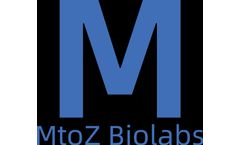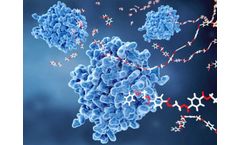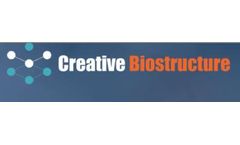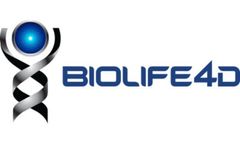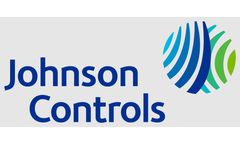Diseases Arriving Early Articles & Analysis
21 articles found
Acetylation detection of a specific protein is a method used to determine whether and where acetylation modifications have occurred on a protein. Acetylation is a common post-translational modification of proteins, typically occurring on lysine residues of proteins, and plays a crucial role in regulating protein function, cell signaling, gene expression, and disease onset. For instance, the ...
In the grand symphony of life, there are countless unsung heroes quietly orchestrating the countless chemical reactions that sustain our world. These remarkable biomolecules, known as enzymes, are the true MVPs (Most Valuable Proteins) that keep our planet thriving. Enzymes are nature's own specialized workforce, each one tailored to catalyze a specific reaction. Imagine a team of highly ...
Lipids are the basic substances that make up biological membranes. Through lipid-lipid interactions and interactions between lipids and other biomolecules, a complex network of lipid metabolism is formed, which is involved in a large number of life activities. By studying lipid extracts, information about the lipidome can be obtained. Lipidomics studies lipids in organisms at a systematic level, ...
Rare diseases are characterized by their low prevalence, affecting a small number of people across the world. These diseases often come with significant challenges, including accurate diagnosis, availability of effective treatments, and limited resources for research and development. However, recent advancements in diagnostics technology hold promise for speeding up the field of rare disease ...
Abstract Background: Rheumatoid arthritis (RA) is a systemic autoimmune disease characterized by chronic inflammation of synovial joints. Anticitrullinated protein autoantibodies are detected by the CCP test in early disease and predict the development of erosive disease as well as extraarticular manifestations. We recently reported that many RA patients have anti-citrullinated albumin (ACA) ...
Nano-flow cytometry is a revolutionary technology that has the potential to transform early disease detection and diagnosis. Nano-flow cytometers are able to detect and analyze individual nanoparticles, including extracellular vesicles and viruses, with high sensitivity and accuracy. This makes them ideal for detecting diseases at their earliest stages, when they are most treatable. How does ...
Enzymes, nature's molecular architects, have been at the heart of industrial processes for decades. Today, the dynamic field of Enzyme Engineering and Modification is driving these biocatalysts towards unprecedented capabilities, triggering a wave of transformative applications across diverse sectors. Decoding Enzyme Engineering Enzyme Engineering stands as a cornerstone of modern ...
Enzymes are protein molecules that catalyze chemical reactions in living organisms. They are involved in many metabolic processes and play a critical role in maintaining the health of the body. In recent years, enzymes have been widely used in disease diagnosis, providing a quick and accurate way to detect and monitor diseases. Enzymes for disease diagnosis can be divided into two categories: ...
Enzymes are biological catalysts that accelerate chemical reactions in living organisms. In recent years, enzymes have been increasingly utilized in medical diagnostics, leading to significant advancements in disease detection and management. Enzyme-based diagnostic tools have revolutionized the healthcare industry, offering numerous benefits such as increased accuracy, sensitivity, and speed. ...
People living with frontotemporal dementia, or FTD, are commonly misdiagnosed with psychiatric disorders or Alzheimer’s disease and other causes of dementia, such as Parkinson’s disease and vascular dementia. While frontotemporal dementia and Alzheimer’s disease can both cause dementia, there are distinct differences in impacted regions of the brain and, consequently, ...
Clinical study launched in June 2022 with patient recruitment in Alberta with plans to expand to further sites across North America. The aim of the study is to validate a novel and minimally invasive liquid biopsy test for bladder cancer diagnosis using Nanostics’ ClarityDX® diagnostic platform. The study is supported in part by the Alberta Innovates AICE-Concepts Program with a ...
Many neurological diseases, including Alzheimer’s disease, can be thought of as continuums, whether the presence and manifestation of the disease are different depending on the stage of the disease. In this article, we provide a high-level overview of the stages in the Alzheimer's disease continuum, with a focus on preclinical Alzheimer’s disease and its importance in patient care and ...
Even if heart health isn’t your top concern in the new year, you can’t go wrong staying on top of your cardiovascular wellbeing. Sadly, heart disease is the leading cause of death in the United States, according to the Centers for Disease Control (CDC). And a recent study found that 40% of adults between the ages of 50 and 64 without a heart-disease diagnosis still had early signs of ...
When automated dark adaptometry was first commercialized, many of us had more questions than answers with regard to using this information for detecting AMD and monitoring disease progression. But with more than seven years of practical in-office experience performing dark adaptation testing on thousands of patients, the tables have turned. This technology offers a safety net for ...
Pediatric Short Bowel Syndrome (also called SBS or Short Gut Syndrome) generally develops shortly after birth due to an underlying gastrointestinal (GI) condition. The condition then can lead to intestinal surgery, in which part of the short bowel is removed. SBS is a devastating condition where patients struggle to absorb life-sustaining nutrients from their diet due to the surgical removal of ...
Despite breast cancer being the second most common cancer for women in the US, progress in the breast imaging space has been stagnant over the last few decades. This is evident in the countless women who are still misdiagnosed – either receiving a false positive or getting diagnosed in the later stages of the disease. Why Early Detection is Important According to the National Breast ...
Revolutionizing breast cancer detection Breast cancer is the most diagnosed cancer in women in the United States and the second leading cause of cancer death in American women.1 It is also treatable if detected early enough. While there are various cancer detection modalities available, current breast imaging devices fail to expose as much as 35% of breast cancers and that number increases to ...
Standardized Data Format – The data needs to arrive in an expected format that enables interpretation by the AI. ...
Abstract Serine-rich splicing factor 3 (SRSF3) plays a critical role in liver function and its loss promotes chronic liver damage and regeneration. As a consequence, genetic deletion of SRSF3 in hepatocytes caused progressive liver disease and ultimately led to hepatocellular carcinoma. Here we show that SRSF3 is decreased in human liver samples with nonalcoholic fatty liver disease (NAFLD), ...
The importance of a good night’s rest can’t be overstated. There is a reason why depriving someone of sleep is a form of torture. Humans need regular periods of quality sleep to recharge, process the day’s experiences, file away memories and follow a normal circadian rhythm to regulate the body’s functions. The amount of sleep we need varies with each person and is ...

